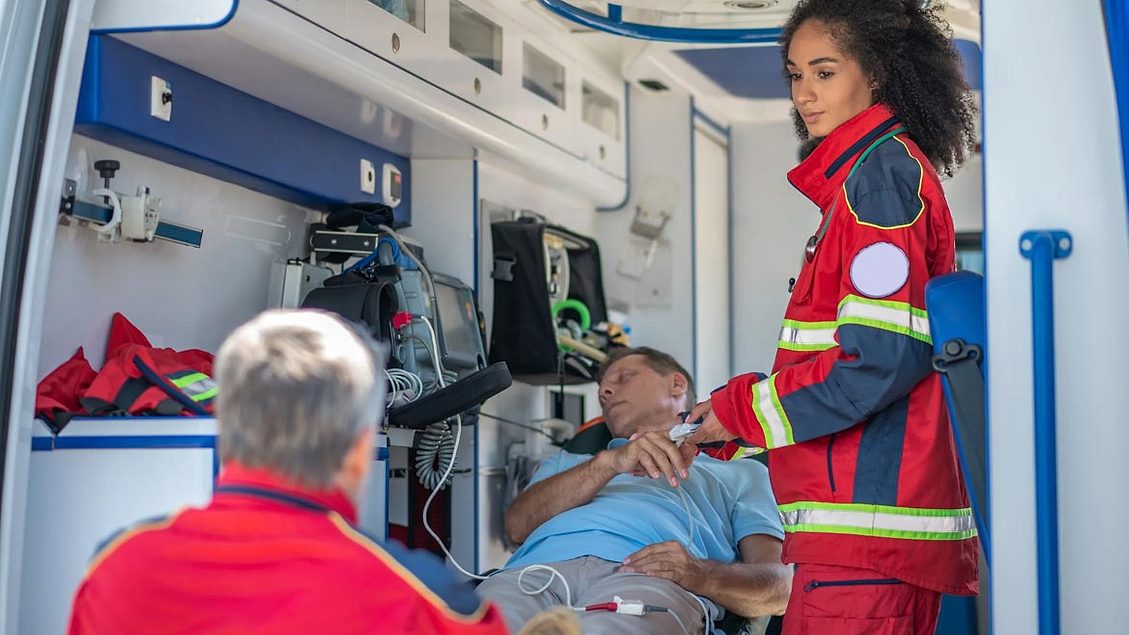- This Android tablet brings a $1,700 iPad Pro feature to the $400 price range - and it's just as good
- Hume's new EVI 3 model lets you customize AI voices - how to try it
- Nord Quantique claims error-correcting quantum physics breakthrough
- Just Published: PTS POI v7.0
- How Cisco is closing the gap on accessibility
Behind the scenes of emergency management

When it comes to emergency management, preparation can vary greatly. Each sector faces its own threats, and even those can differ depending on factors such as region or time of year.
Schools, for example, have to protect their students, faculty and staff. They face the threat of active shooters and violence, but also must be prepared for severe weather emergencies. In the United States, fire season runs from late spring through fall, often when students are entering and leaving school. Hurricanes, tornados and snowstorms also pose risks to schools.
Some of these risks are exacerbated in college settings, as the students are more likely to be unfamiliar with an area’s weather threats. Southern California natives attending college in the Northeast are likely to be prepared for a wildfire, not a blizzard, and may not know what to do in an emergency. Campus security leaders should work alongside local leaders to prepare their students for severe weather emergencies.
A security leader working to prepare students is Joe Hernon, Associate Vice President for Emergency Management, Campus Safety and Environmental Health at Colgate University. In the state of New York, Hernon’s role involves preparing students and staff for the emergencies most likely to affect them.
“I oversee a variety of different departments, one of those being our fire safety department, our campus safety department, and our environmental health and safety department,” Hernon says.
“One of our biggest threats is weather’s impact to our operations. Obviously, there’s always the worst case — that one percent chance of an active shooter, or act of violence scenarios. Our primary planning and focus is around natural disasters and their impact to our community. The probability of that kind of event is so much higher. We built out our ability to shelter, so spaces designed for flooding, ice or a snowstorm can also be flipped over to an operation like an act of violence or hazmat incident,” Hernon says.
SECURITY ISN’T A ONE-PERSON JOB
Collaboration between schools and other organizations can help boost emergency preparedness. Hernon discusses how “as a partner with the National Weather Service, we are constantly receiving daily updates. We also have our own weather system that we utilize for athletic events and major outdoor events. We’ll talk about what we have going on. What have we heard from other universities? Has the university 40 minutes away from us already closed? What are we seeing in the K-12 system?”
Our primary planning and focus is around the natural disasters and their impact to our community. The probability of that kind of event is so much higher.”
— Joe Hernon, Associate Vice President for Emergency Management, Campus Safety and Environmental Health at Colgate University. Headshot image courtesy of Hernon
A critical aspect of emergency management is collaborating with government organizations. Police officers, firefighters and emergency medical technicians (EMTs) are essential in an emergency setting. These partnerships can help security leaders determine how to build trust within their community. Students want to feel safe on campus, and trusting campus safety is an important first step. The phrase “if you see something, say something” is used a lot among security leaders, but is meaningless if students do not feel safe reporting the issues they see.
“Our campus security is New York State Security Guard certified, so our officers here don’t carry weapons. Not carrying weapons creates opportunities to connect with students where a weapon on the side of their hip could have been a barrier. At the same time, we do have a number of our employees and members of our campus safety team that are firefighter/EMTs, so they have an opportunity to engage students in medical crises as well,” Hernon says.
BUILDING A COMMUNITY OF TRUST
Part of helping students feel safe is ensuring they’re taken care of. While students should be educated around potential threats, it’s important to ensure they aren’t constantly afraid of worst-case scenarios. Stress and mental health concerns can affect overall campus safety in a number of ways. A mental health crisis can turn into an active violence scenario, and security leaders need to be prepared.
“We’ve seen a number of mental health crises, so we’ve been trying to branch out and get our folks more trained in that, utilizing some programs with crisis intervention teams. We’re utilizing our own Counseling Center and subject matter experts to help build up our folks’ skill sets. That way at 2:30 in the morning, when most of the campus administrators and the Counseling Center is gone, our campus safety officers that are going to be responding to this mental health crisis have the right tools to address the situation.”
Hernon says that he’s proud of his campus security team’s ability to bond with students. “We found that students love to come out for food. It provided an opportunity for students to come have some tacos with us and our staff. They get to see our team outside of potentially that scenario where we’re writing you up for something on campus or we’re enforcing a university policy.”
A key component of emergency management is prevention and preparation. Small steps, such as tracking the weather and building community trust, can save invaluable time in the event of an emergency.

